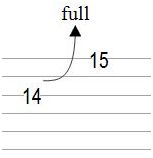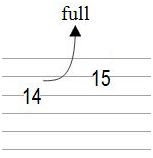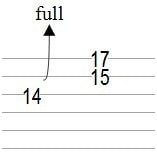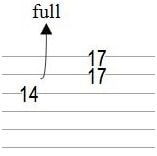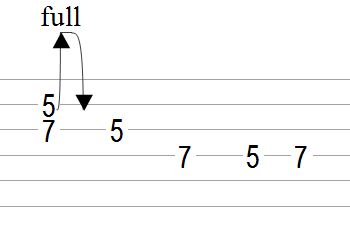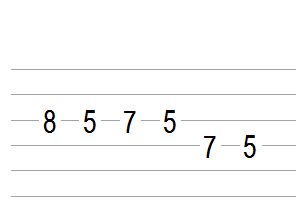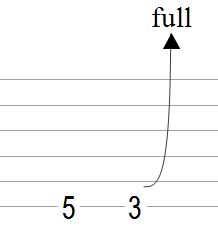Tommaso Zillio
You have probably heard of the CAGED system for learning guitar scales. In fact you may actually be using it, so let me ask you a question: do you feel like you are mastering the fretboard completely? It’s incredible how many times I hear a negative answer to this question, followed hastily by: “but it’s me, not the CAGED system. I just need more practice”. Well, I have learned the CAGED system too, and I found that it’s actually the system to have some problems that prevents guitar players to reach their full potential. If you want to save yourself years of frustration, keep reading.
The CAGED method is now so ubiquitous that many musicians think it the only existing method to learn how to visualize the fretboard. I know at least two local guitar players in the city where I live that teach the CAGED system to their student even if they personally are not using it. Both of them, when questioned about it, answered that they used for themselves a method they invented but were teaching CAGED because “it’s the correct method”. If the method is “correct” whey don’t you use it? Why do you need to invent a new one? The answer is that, as we will see below, the CAGED method has a number of problems in practical applications.
These problems are why most players are confused or frustrated by “scales” or “music theory” on guitar. The problem is not that these topics are difficult, but that the system used to teach them is either limiting you or making thins more difficult. The real problem with the CAGED system, as we will see below, is that it’s making you doing a lot of work, so you have the feeling that you are learning something or understanding better, but at the end of the day you are not able to do the things you needed to be able to do. Below I explain this in detail so stay with me.
There is no integration with arpeggios…
Every time I talk with a CAGED apologist, the very first thing they tell me is that their system integrates scales and arpeggios. This is not true. What it’s true is that the scale patterns are superimposed over a major chord shape, but these shapes are not always usable as arpeggio patterns (see below). The only advantage seems to be that they are similar to the open strings chords most beginners know, but that’s about it.
So, what I mean with “not usable”? I mean that the shapes shown for the chords are difficult to play cleanly and fluidly compared to other shapes such as the standard “sweep arpeggio” shapes. This is partially because some of the shapes are good only for few strings: for instance the “G shape” does not cover strings 2,3, and 4: these notes must be borrowed from the “A shape”, but the resulting pattern is not easy to play as an arpeggio. The “D shape” covers only the first 4 strings, and so on. In all these cases the arpeggio/scale integration seems good visually, but it not as convenient mechanically. Try just to play the scale pattern ascending and then descend using the arpeggio without stopping to see what I mean.
… and only MAJOR arpeggios at that
All the CAGED scale patters are shown, as I said above, together with a major chord shape. You may notice that it is quite less common to show them with a minor chord shape, and there are practically no diagrams out there with a diminished, augmented, or altered chord. Even the seventh chord patterns are rare.
This is no chance: with minor chords the CAGED scale patters look already less attractive, as the shapes for the minor arpeggios present more technical difficulties (compare them with the standard “sweep arpeggio” shapes to see what I mean). It’s even worse for diminished, augmented, or altered chords.
When I ays this in conversation many CAGED supporters raise their shield and “inform” me that you can of course use the CAED patterns on minor chords. Well, I didn’t say you couldn’t, I just said that it is more difficult. I am sure that if you throw enough practice hours at this problem then you can do it — the question is if there is a simpler system or not.
Just one recommendation on this point. I have seen a number of authors recommending to use the “relative major” shapes on minor chords, for instance to solo on the Am chord they use the C major scale shapes. Patches like this have the result of making the system even less intuitive, make it more difficult for you to solo “in” the chord (because a C chord and an Am chord are not the same chord…), and do not ultimately address the problem of all the other chord types anyway.
It is inferior technically
It is not a mystery that most shredders do not endorse the CAGED system, and for a very simple reason: because it is difficult to play scales at high speed using these scale patterns.
You may or may not be into shred and fast playing, but it is a fact that if a scale patterns make it difficult for you to play at a high speed, then it is putting an unnecessary technical burden on your playing at any speed. Or in other words: stuff that can be played faster is usually easier at any speed.
The reason why CAGED patterns are more difficult technically is that they are not consistent in the number of notes they have per string: some strings have 2 notes, some 3. This is because CAGED patterns are derived from the principle used in classical guitar playing of “one finger per fret” — and this is all good but this principle is NOT helping you to play electric guitar (that is a different instrument than classical guitar, goes without saying). A better option, that will make easier to play also melodic patterns (“sequences”) is to lay down your scales with 3 notes per strings.
Another technical problems most CAGED users but the most advanced tend to have is that they stay in “position playing” i.e. they never move from one position on the fretboard. Needless to say, this reflects on the quality of their soloing.
To realize how the CAGED system is technically inferior, I suggest the two following three exercises: 1) try and play the scales as fast as possible. 2) Try to play a scale sequence such as: C, D, E, D, E, F, E, F, G, etc… 3) Restrict your playing to only the first two string, and play the scale patters all across the fretboard. In all three cases you will see that the CAGED system produces some awkward fingering when the scale pattern passes from 3 to 2 notes per string.
It is too scale-centric
Every CAGED method I have seen shows the scale patterns superimposed with the chord patterns, often with the comment that “this is how you integrate them”. Literally all the method I have seen, though, have you play these scales… but virtually none have you play the arpeggios. As a result most players that use the CAGED patterns have a scale-centric view of the fretboard: everything comes from, or is reduced to, a scale, and since this is the center of their approach this is also the thing they play most in real playing situations.
You may have heard or read online the advice that you should “not learn scales as they are bad for you”. I have also heard this phrased as “scales are stupid”. Of course I don’t agree with that: you should learn your scales. But there is a grain of truth in these comments: you should not learn ONLY scales. You should learn ways to break free of the scales whenever you need. But especially you should not rely on systems that make it difficult to play anything but scales.
There is lots to learn by heart
I hear often that in the CAGED system “you need only to learn 5 patterns an then you are done”. Well, I could point out that this is not true at all (see next point) but for now let’s concede it: you just need to learn 5 patterns. Sounds good, no? But what if I told you that in other scale systems, such as in the 3-notes-per-string system (if taught correctly) you need to memorize ONE pattern — not 7 like most people think. I don’t have the space here to go in depth into that, but if you are interested in how is this possible let me know in the comments and I will write an article on the topic.
There’s more. In order to use a scale pattern to its full power, you need to know more than just the pattern: you need also to know what scale degree is represented by each note in the pattern: which one is the root? which is the fifth? and so on. Since the CAGED scale patterns lack intervallic regularity then you need to learn the scale degrees separately for each of the 5 shapes. You will agree with me that this is not as attractive as it seemed at first sight…
It makes difficult to use different scales
“So you learn these 5 patterns and you are set for the major scales and its modes”. “Ok, but what if I want to use something different, like the melodic minor scale, or an exotic scale?” “You can see it as a variation of the major scale”. Ok, well, this is technically true. Any scale can be seen as a “variation” on the major scale, simply because if you change enough notes you can obtain any other scale. But is this a goos way to think?
I think the real problem is if we it is convenient for us to think of the new scale in term of the major scale. And the answer is: often this is not the case. Some scales are simply “too far” from the major scale for the original patterns to be of any use. Even changing only one or two notes, in fact, it’s quite difficult to manage. Ultimately you will find yourself learning a new set of patterns for each new scale you want to use. Want to play the neapolitan minor scale? Learn a new set. Want to use the melodic minor for some Jazz? Learn a new set. The CAGED system does not look like an elegant and economic system in this respect.
But Hendrix used it?
Even if Hendrix used it, a scale system is good for you if it helps learning the fretboard in an efficient way, and then does not limit you. It does not matter who used it or not. But since I’ve heard this Hendrix thing countless times, let’s get rid of it once and for all.
The CAGED system was invented and popularized in the late 70′s, while Hendrix died in 1970, so it’s unlikely that he used it. He could have figured it out by himself, of course, but he left no indications of the scale system he used, and from his solos you can see clearly that he’s not using the standard CAGED patterns.
Of course, other famous players may be using CAGED. Many for instance claim that Joe Pass was using it. He certainly mentioned it. O the other hand, I do own Joe Pass’ scales book, and the system he explains in it actually used 6 different patterns, not 5 as CAGED. Also, Joe Pass was using this system more to visualize different chords, not full scales. Based on this, it seems to me that what Joe called CAGED in his days and what is passed as CAGED today are actually two different systems and we should not use the same name for them.
Of course someone is going to mention in the comments that famous schools like Berklee use the CAGED system in their curriculum. Well, this is true, but are their most successful graduates using it? Take for instance the solos of John Petrucci, arguably one of the most famous Berklee students, and you will notice that any non-pentatonic scale in his solos is actually played with a 3-notes-per-strings pattern. Curious, eh?
It’s taught the wrong way
Of course, the CAGED system DOES have one advantage. If you already know how to play pentatonic scales, then you can start playing modal scales by adding modal notes to them. For instance, if you are playing the Am pentatonic, and add the notes B and F# then you are effectively playing the Dorian scale. In this case, starting form the 5 standard pentatonic patterns and adding the modal notes you will obtain the CAGED patterns.
In other words, the cAGED patterns are a nice way to go between pentatonic scales and diatonic/modal scales… and that’s about it.
The curious thing is that I have never seen the CAGED system taught this way. All the educational resources that I have about CAGED insist a lot about the fact that the scale patterns are superimposed on the major chord shapes, but do not even mention the pentatonic/modal connection. It is quite interesting that the CAGED system is branded as a “general” system that can handle any playing situation well (which is not true) and it is not explained in the area where it would shine.
Everybody has a different idea of what CAGED is!
Every time I talk about, write about, or otherwise explain why the CAGED system does not live up to the hype, one or two people are bound to say: “Wait a moment this is not the CAGED system. The CAGED system is…”.You see, this is another problem with CAGED. It has been “copied” over and over by so many less-than-competent authors that everyone now is teaching a different thing and calls it CAGED.
If you are willing to throw enough energy, time , and resources at it, eventually you WILL find a system you like (for a while at least) that is taught under the name of CAGED. This is simply because every way to see the fretboard has been taught before or later under the CAGED name. I have a DVD where the author explains the octave pattern on the fretboard and calls it “the CAGED system”. I have a book that states that the standard tuning of the guitar (established in the 16th century) is a consequence of the CAGED system (invented in the 70′s). And let’s not talk about that YouTube video that explains the 3-notes-per-strings patterns and calls them “a variation of the CAGED system”!
If you realize the absurdity of this situation, you will also see why so few people dare to criticize the CAGED system: no matter what to say, you are bound to find someone that will comment “but this is not the CAGED system” followed by endless and fruitless discussions on matters of definitions. But let me tell you something. I own (and have studied) enough instructionals and DVD’s on the CAGED system alone to fill a 4-feet shelf in my studio. I believe I have more than half an idea of what I am talking about 
With this many problems, how can it be so common?
So why the CAGED system seem to be so widespread? We can see his problems, so why guitar educators have not rejected it? For 3 reasons: 1) There is an industry behind it. Pretty much anyone can write (and sell) an eBook on the CAGED system by copying the 5 pattern and telling you to learn them. 2) It’s easy to teach. After all, you are just handed down the 5 pattern and supposed to make sense of them. I have seen the consequence of this method in many students who come to me form other teachers: they know these patterns by heart, but they can’t apply them to save their life. 3)Because it is seductively simple for the people who want a “magic bullet” to learn scales. Again, the slogan “learn the 5 shapes and you are done” proves to be attractive. Don’t fall for the hype, and just throw away these books on CAGED. You’ll be better off in the long run.
About the Author
A professional guitarist, teacher, and composer, Tommaso Zillio enjoys particularly writing about music theory and its application to guitar playing


